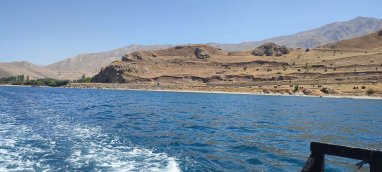
In Lake Van, which is located on the Armenian Highlands, at a depth of 23 meters, underwater archaeologists discovered a very strange settlement.
On the one hand, the location of the ruins of houses indicates the correct construction of the streets, that is, an urban-type settlement. On the other hand, part of the ruins looks more like the remains of an agricultural community (village).
Near the settlement, a cemetery was found, some of the tombstones of which were marked with Christian crosses, and some with signs of the Kayi people, one of the 24 most ancient Turkmen (Oguz) tribes. This is reported by the scientific publication naked-science.ru.
According to legend, the founder of the Kayi tribe was the son of Oguz Han, the progenitor of all Turkmens.Traces of the Oguz, as well as other Turkic tribes that did not have a written language, are searched for by Turkologists based on the finds of tamgas - generic signs.
The main tamga was worn by the ruler, but all the property of the family was marked with the same sign.
Using this method, scientists determined that the kayas roamed mainly in Central Asia, but in the 13th century they had to change their habitats. Under pressure from other steppe tribes, they went to Asia Minor, where they first provided military assistance to the Konya Sultanate, which was at war with Byzantium.
Photo: Naked Science
For this, the Sultan granted the kayi land in the northwest of Anatolia. At some point, the newcomers from Central Asia decided that these lands were not enough, and their ruler Osman I began to gradually increase the territory under his control, taking advantage of the fact that the long war with Byzantium had seriously weakened the sultanate.
In 1299, the former nomads proclaimed the creation of the Ottoman Sultanate (or Ottoman Empire) and by 1453 they had subjugated all of Asia Minor. The Kays changed their self-name to Ottomans, but did not change the symbols they used to mark their property.
In 2017, archaeologists found a fortress at the bottom of Lake Van, which, according to radiocarbon dating, was 3 000 years old. At that time, Lake Van and its environs belonged to the state of Urartu, which occupied the lands of modern Armenia, Eastern Turkey, and also northwestern Iran.
